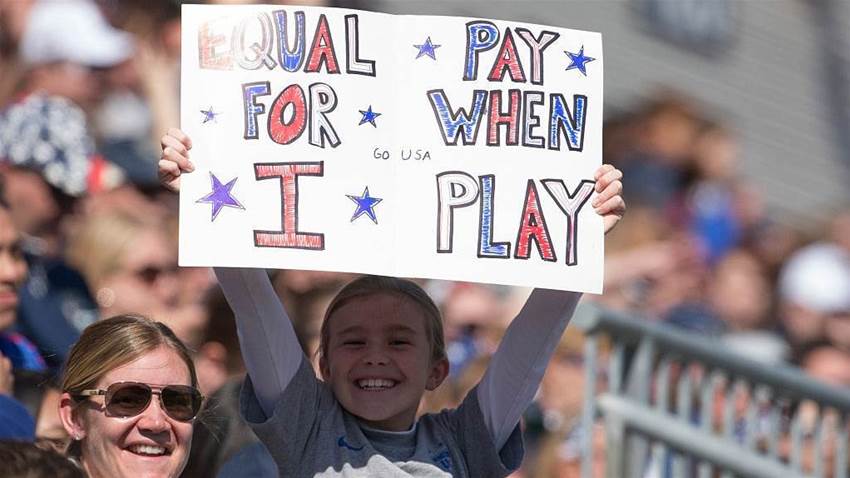Whether you're AFL, football, union, league, tennis, golf, surfing or professional curling, the recent Matildas equal pay decision is a landmark moment for pay equality in sport. But to a lot of people, it seems completely unjustified. Here's what you should tell them.
We recently had the unenviable job of trawling through social media after the Matildas equal-pay decision to compile a 'best of' collation of the glowing reaction around the world to Australian football's decision.
But for every two or three congratulatory posts by Billie Jean-King or The New York Times, there was an outraged comment from someone, questioning 'How this is fair?'
Now some of these people are stupid pricks, but others make a genuine point:
No one is saying you don’t work as hard. You don’t get paid for hard work though, you get paid by revenue. An NBL player works just as hard as an NBA player so wheres their equal pay? Socceroos are subsidising Matildas. And anyone who challenges this new deal is “sexist” now?
— karl (@yaboypilkington) November 5, 2019
The problem with social media is it's not the place for a considerate, educational conversation. Yet unfortunately, this is where society now has discussions about serious issues. So we can't just ignore these concerns.
If you try to see it from their perspective, it's easy to understand why many people would have a problem with the Matildas earning an equal 24% split in match revenue when they create far less than the Socceroos.
But their questions and statements rarely get responses and when they do, they're often decries of sexism or ignorance.
Many of these people are our fathers, brothers, husbands, sons and boyfriends...and there are many women who don't believe in equal pay as well. Troublingly, we never hear from most of the people who hold these opinions. They are too afraid to speak up, because they know they'll get shut down.
But if we don't encourage them into an informed discussion now, we'll force them into a position where they feel unable to voice their concerns. They then become the silent majority and this is exactly how Brexit, Trump and who knows how many other 'surprising' election results happen.
If we want sustainable change, we have to engage.
So with this in mind, we've prepared the following 10 quick reasons why female athletes actually do deserve equal pay, so everyone reading this can arm themselves with fact-based, rational and inclusive arguments for when you come across somebody who just can't fathom why women would be paid the same for the same job...
BUT FIRST, YOU HAVE TO KNOW EXACTLY WHAT EQUAL PAY MEANS
Let’s be really clear. Equal pay means equal pay for the same amount of work under the same boss.
Nobody's claiming that W-League players should be paid the same for a 14 round season as A-League players are paid for 29, just like we're not claiming that a Caitlin Foord should earn the same as Carli Lloyd.
The argument is that female and male sporting teams, who have the same basic workload, responsibilities and amount of matches, be paid the same basic wage by their sport's governing body.
But here's the kicker: this should be the case even though male sporting teams generate more revenue than female. Here's why...
1. INVESTING IN FEMALES IS A SMARTER INVESTMENT
If you want to boil it down to raw economics, women's football is simply a smart investment right now.
Women's sport is experiencing a vastly accelerated growth rate compared to men's sport, meaning if you’re a governing body, greater investment in elite female players makes stronger economic sense if you want a return on your investment.
This deal will crucially allow the Matildas to continue expanding upon on their current growth trajectory, creating greater overall revenue for Football Federation Australia in the long-term.
Now, you might say, 'But we're only talking about individual player wages here?'
Well, for a start, we're not. This 'equal pay' principle actually also applies to equal treatment in terms of access to backroom staff, physios, training conditions and air travel. These are all factors that are included in equal pay negotiations.
But even if we were, the principle still applies. From the perspective of a sporting organisation, you get a greater economic return for investing in poorer elite athletes over richer ones.
A Matilda currently on around $60,000 a year is statistically more likely to put that wage increase towards factors that will improve her on-field performance, than a male Socceroo on $120,000 plus endorsements, who is generally more likely to invest it in that new Ferrari they've been eyeing off.
So that's one reason it makes sense, but why do they deserve it?
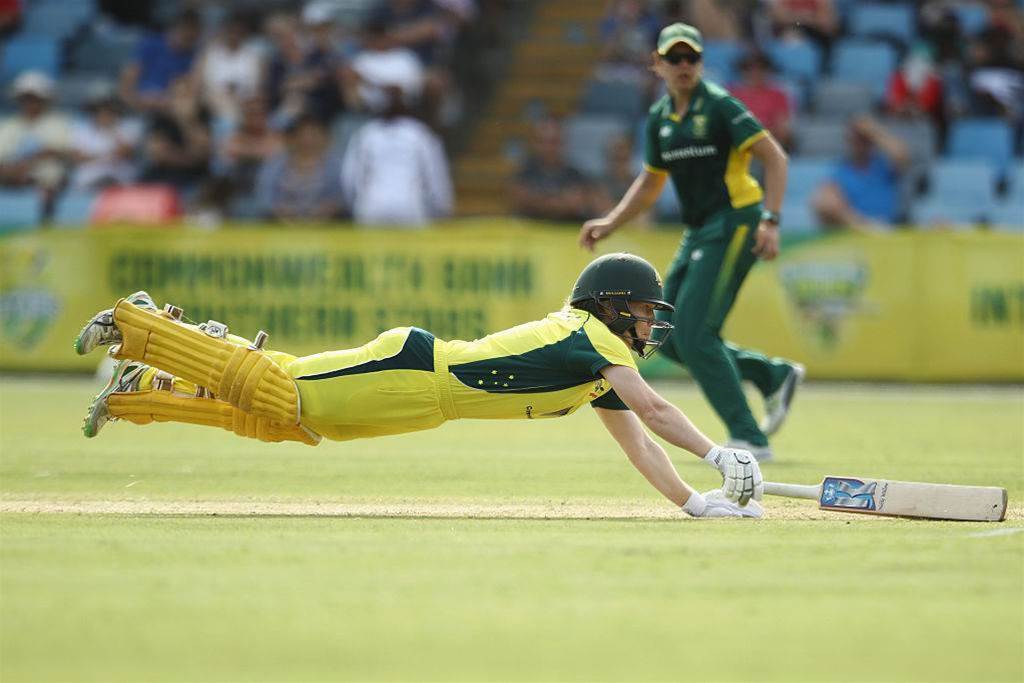
2. FEMALE ATHLETES HAVE ALWAYS BEEN DISCRIMINATED AGAINST
There was never a stage when women and men’s sports where given an equal playing field, and people simply chose to follow men’s sports instead.
Right through the first half of the 20th century, when male sports where becoming highly organised, marketed and the first professional contracts were being established, women’s sport was actively discouraged.
Women couldn’t even form football teams in England and most other European countries throughout the 1920s. It was seen as ‘unwomanly’. The discrimination against female athletes continues to this day, but the current rise in opportunities for females now gives us an opportunity to redress this.
Women’s sport has long-suffered from a dearth of marketing, funding and organisation, so they’re starting from a vastly inferior base.
Anybody who watched the US national team at the Women’s World Cup knows that at the highest level, female football is just as highly skilled and entertaining as male football.
Just as Serena Williams is equally impressive to watch as Roger Federer, or Karie Webb was just as exciting as Greg Norman, or Elyse Perry bashes just as many sixes as David Warner. The Matildas are just as exciting to watch as the Socceroos (if you like winning, they’re more so).
But it will take decades to bring the rest of the field up to the elite level if we simply assume that laissez-faire free market capitalism is the only way forward. Which is incredibly unfair considering we actively discouraged and prevented women playing professional sport for well over a century. In order to level the playing field, now we have to actively encourage it.
But crucially, this does not mean that male sporting sides are simply subsidising their female counterparts…
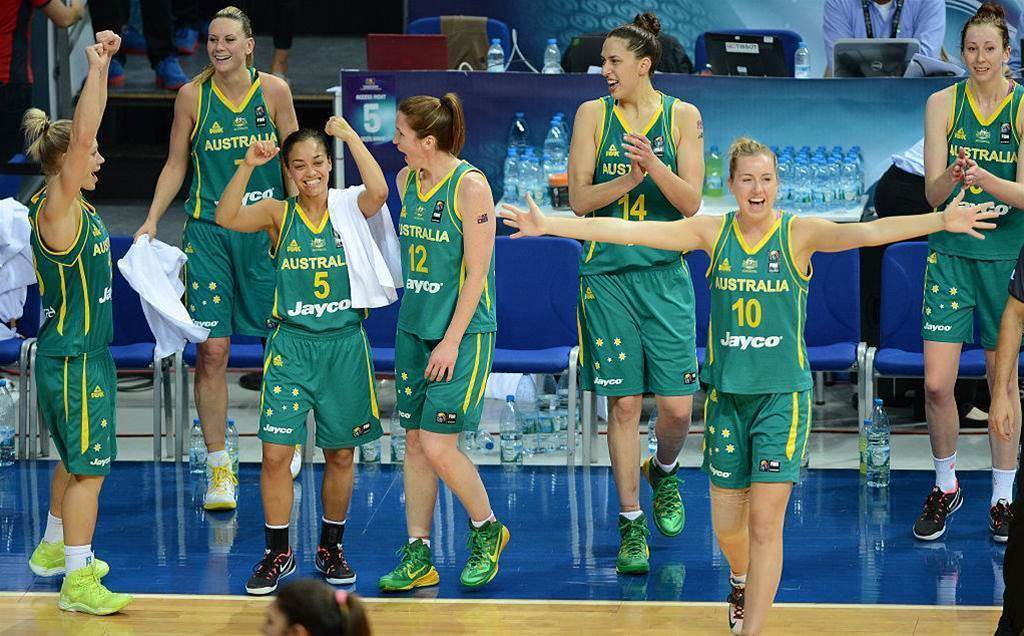
3. INCREASING FEMALE WAGES INCREASES MALE WAGES, TOO
A far higher percentage of young Australian girls compete in football than any other sport.
However, the Australian game has shown a general ineptitude over the years in transitioning children who play football into actual fans of the Socceroos or Matildas (let alone the A-League and W-League).
Across Australia, sports participation rates for football are as high as 45% of teenagers between the ages of 13 and 18. AFL is back around the 16% mark.
Yet AFL is the richest sport in Australia, financially sustainable to the point they can make AFLW attendances free, while securing deals in their new CBA negotiations that vastly outstrip the amount the W-League can afford to pay its players.
Why? Because while kids play football, they support AFL.
The lack of ability to turn football players into football fans is the greatest hurdle facing Australian football financially, and its greatest potential source of revenue going forward.
By literally telling parents and girls that we equally value women's football to men's football, you drastically increase the chance of them...
a) Feeling like they have a future career in the game
b) Valuing female football themselves, by supporting female football in Australia through attending matches and purchasing merchandise
c) Retaining their allegiance to football, rather than converting to one of Australia's more mainstream sports, and generating revenue for them instead.
Over 3.3 million women attend sport matches every year and at last count, football wasn’t even in the top 10. By increasing investment into women’s football, FFA are expanding a new market. The better the footballers, the more fans. The more fans, the more money for men’s and women’s football.
This isn't an argument exclusive to football. By making the same decision, you gain the same positive effect, whether it's AFL, league, union, cricket or professional goat racers in Kyrgyzstan.
By paying female athletes equally, you're increasing your chances of attracting and keeping females in your sport, as players and as fans of both men and women’s sports.
But if women are so marketable, why is equal pay even an issue?
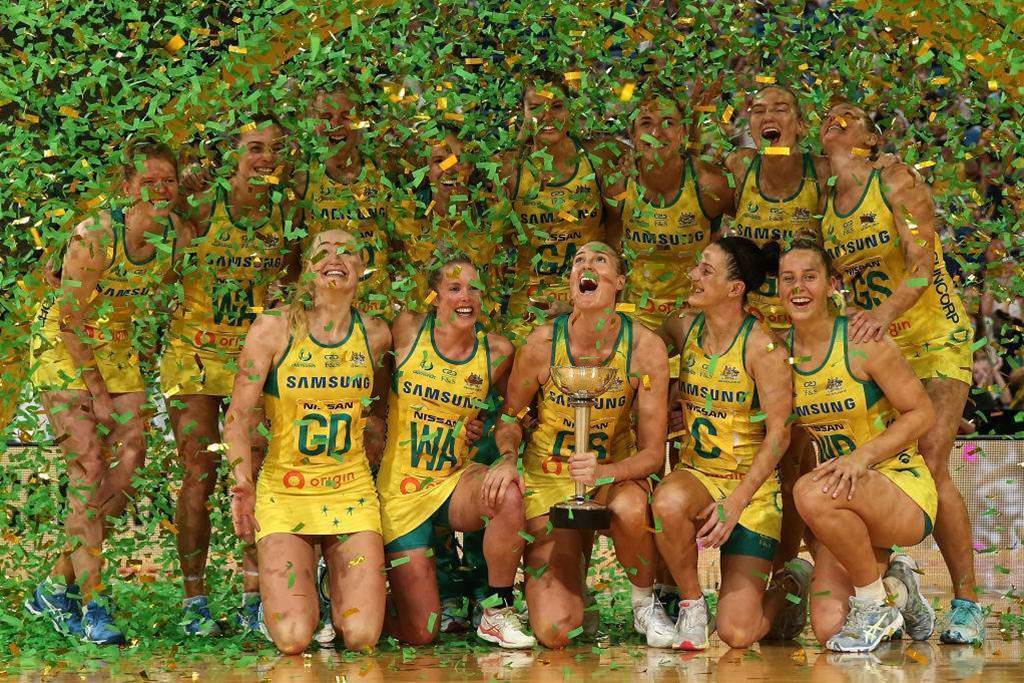
4. THEY ATTRACT A DIFFERENT BREED OF SPORTS FANS
Sick of football hooligans? Swearing at umpires? Flabby guts stretching out of tight-fitting AFL jerseys? Whether it's men or women, if any part of society becomes far too weighed in favour of any one gender, it becomes unattractive and exclusive.
By attracting more women into sport and offering more women's sports, you give the public an alternative that we may end up liking even more. But how does this relate to equal pay?
We're glad you asked.
Women's sport is not only growing at a faster rate than men's sport, but in many ways it's already more marketable.
Nielsen research found that female athletes appeal to a wider variety of people, including mothers and families which control the majority of household expenditure.
They also score significantly higher than their male counterparts for key influencer marketing traits, such as inspiration, social responsibility and healthy body image, while scoring far lower for undesirable marketing traits, such as aggression.
In other words, investing in female athletes means greater exposure, which means a better chance of selling your product (in this case, sport) to people outside of your existing fanbase.
It gets even juicier. Women's football is also rising in popularity at a faster rate in extremely lucrative markets where men's football has traditionally failed.
The last Women's World Cup had an 11% increase in viewership in the US alone, despite being on at very 'unfriendly' broadcasting times.
This is echoed in Australia, where men's football has a huge amount of competition for male sporting audiences, but female football has a unique opportunity to capitalise on the lack of established female sports.
The USA and Australia's high position within the FIFA Women's world rankings, when both of us have been unable to crack the men's version of the game, offers a huge growth corridor for the sport going forward.
But it still gets better, because all of the largest developing markets for football: China, India and the other highly populous nations in South East Asia and Africa stand to reap the same rewards from investing in the women's game.
This means that with investment in female footballers, female football has a chance to redistribute football's reach outside of Europe and into the world's biggest markets.
The potential is there, but it all starts with enabling the footballers themselves.
But will more money for players really equate to more fans in the gate?

5. THE WIDER THE PAY GAP, THE SLOWER THE REVENUE STREAM
Not only do females receive less professional sporting opportunities than males, they also face larger barriers to compete at their best, and therefore attract more fans to generate more revenue.
If female athletes aren't given the same basic resources as men to compete at the highest level, how can you expect them to show they are worthy of greater revenue in the first place?
One of the features of the new Matildas pay deal simply meant they weren't packed in like sardines with us in economy class on planes to matches.
Now you can be as disparaging towards female sport, but you can’t tell me if Neymar had to sit next to a 130kg bloke and a crying baby on a 15 hour plane trip to Paris he’d be able to excite packed crowds at the Stade de France.
Don't get me wrong, I don't like the snobby airplane stewards and that bloody curtain any more than you do, but if I saw a Matilda next to me in economy I would rightfully feel she was hard done by.
Female athletes have less access to training equipment, medical staff, recovery procedures, dieticians and chefs, grounds and practice pitches, travel arrangements, assistants and worst of all, those futuristic jetlag-preventing sunglasses that the Socceroos have.
Without even remotely the same playing field, how can you argue that they should be able to produce the same quality product?
It's not a chicken or the egg scenario. You have to have equal preparation before you can expect an equal result.
With the resources they have at their disposal, Australia’s female sporting sides are already over-achieving dramatically. If we at least give them the same basic treatment as our men’s team for the same work, it wouldn’t surprise us if we got twice the bang for our buck.
But this doesn’t even begin to explain how much female athletes are overachieving…

6. EVERYTHING ELSE IS AGAINST THEM, TOO
Elite female athletes, despite working just as hard, not only get paid less overall but on average have significantly shorter careers.
This is due to motherhood (which, let's remind our financially-savvy doubters, is the most crucial contributor to prolonged economic growth), their lack of opportunities at club level, as well as increased susceptibility to injuries and a range of other factors.
A far greater number of female athletes also take time away from the game for family responsibilities, including caring for elder relatives.
Patriarchal structures still insist that females, no matter how talented, bear the burden of the ridiculous amount of unpaid family work that is essential to the way our society operates.
People have been justifying the exorbitant wages paid to male footballers for years under the banner that they could lose their career at any moment through a horror injury, or the ridiculous pressure they're under to perform.
But now that female sport is firmly in the spotlight, the expectations are far greater and the level of competition is stronger than ever before, we're still expecting female athletes to be able to carry the burden of everything else a woman has to deal with, on top of a professional sporting career.
And all they're asking for is equal pay?
But if that’s still too unreasonable, perhaps the next approach is better suited…

7. DOESN'T PERFORMANCE MATTER?
The Matildas are ranked eighth in the world and the Socceroos 44th.
If your colleague created more revenue than you, yet you outperformed them in every key performance criteria, wouldn't you think there was a problem with the way the revenue was allocated?
Simple, huh.
It gets even simpler…
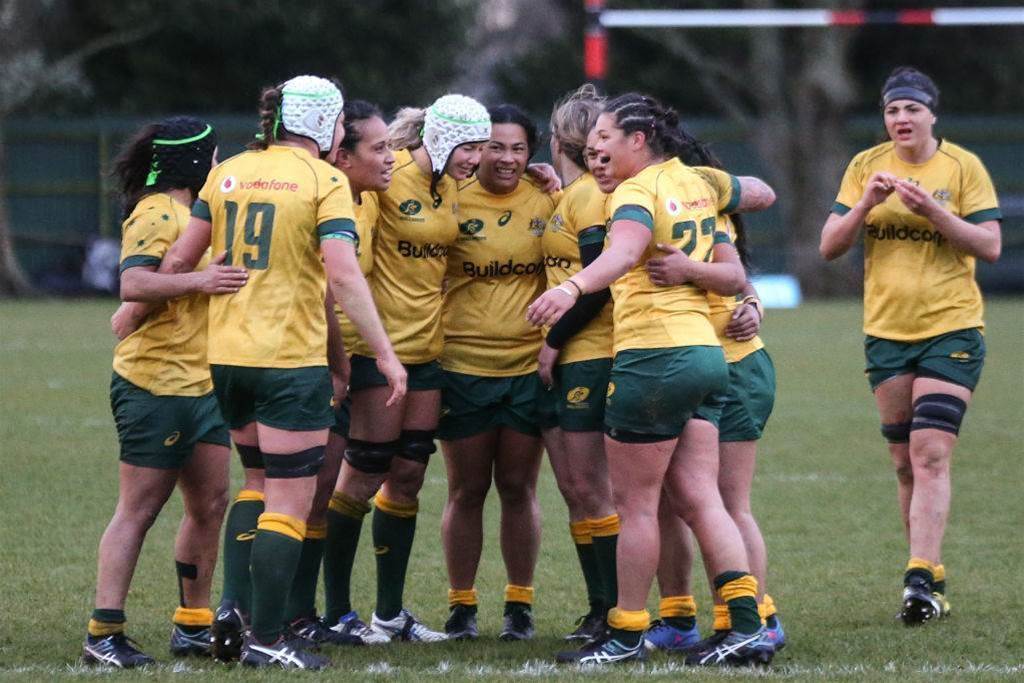
8. WE'RE TALKING ABOUT INFLUENTIAL, MASSIVE ORGANISATIONS HERE
FFA isn't exactly your local mum-and-pop store struggling for a buck.
Neither are any major sporting organisations for that matter. Hockey is probably one of the smallest mainstream sporting bodies in Australia and yet they've had equal pay for years now.
International sporting organisations - the ones that decisions like this are crucial to putting pressure on - aren't short of a few quid either.
FIFA's top two paid employees earned more last year in wages than the entire Women's World Cup prize pool.
But it gets worse. Neymar’s pay last year was roughly equal to the combined pay of all women in the top seven female footballing leagues in the world. Tell that to your sexist uncle.
There is a lot of evidence to suggest that football is the most unequal profession in the world.
Decisions like this have wide-reaching ramifications across countries and organisations that feel the legitimate right to actively discriminate against women.
Not only in pay, but in all walks of life.
Sport has the ability to change the lives of women everywhere. Until recently Iranian women weren't even allowed to attend football matches. But under public pressure, FIFA forced Iran to change its regulations.
Lack of respect towards women is a chronic issue around the world and it's just as newsworthy in Australia, where one in two Australian women will experience domestic violence.
Sportspeople are our major role models. By paying them equally, we're telling a segment of society that may otherwise not be paying attention, that we value women's contributions equally.
One simple step that can make an entire world of difference.
But if all this still hasn’t convinced them, there’s one final reason they really can’t argue with…

9. MEN STILL EARN MORE IF THEY CAN GENERATE MORE REVENUE ANYWAY...
The constant argument, as we showed on the first page, is that male athletes should earn more because they can generate more revenue. Well, equal pay doesn't actually change that.
Male sportspeople, including the Socceroos, still earn a significantly larger amount than women on average due to prize money, sponsorship deals and other commitments.
This means that overall income is still largely based on potential revenue anyway, which makes these changes a relatively small step in ensuring that on a governmental and bureaucratic level, the odds aren't also entirely in the men's favour.
But this level matters a lot. It's the entrenched, institutionalised disenfranchisement of females that prevents women from contributing and restricts the overall growth of every sport.
By establishing the principle of fairness in our governing bodies, we're making it clear that equal work and talent does deserve equal pay.
Now if you happen to have a more marketable product on top of that fact, there is nothing stopping you from earning a lot more money from it outside of your basic wage.
That’s more of a reason for equal pay, because basic wages shouldn't then add to that disparity.
So let’s wrap this all up…

10. PAY IS JUST A SMALL, BUT CRUCIAL STEP ON THE ROAD TO EQUALITY
Ultimately, your take-home bank balance is a small part of the argument for 'equal pay'.
As this deal showed, all the other issues that are forced into the discussion by raising the idea of equal pay are equally important.
These are factors like parental leave, access to physios and training equipment, childcare and can we repeat, shelling out for a business class ticket, c'mon, that far fewer people would contest, because they should be basic entitlements for any elite athlete.
Yet they're not.
So finally, when you're explaining to somebody the merits of giving equal pay to women's sport, explain that it makes economic sense.
Explain that's it's a better investment, that these wages are a tiny fraction of the organisations who make huge profits, that it's all based on a team's performance anyway and that it's greater for sport and society as a whole.
But if after all of that, they're still arguing, then explain that as long as we're still allowing big businesses to pay your mother, sister or daughter less for doing exactly the same job, we're still encouraging a culture where they're more likely to be overlooked, ignored, sexually harassed or even assaulted.
Equality is coming and you don't want to be on the wrong side of history when it gets here.
Related Articles

'Timing not right': Montemurro's verdict on Matildas vacancy

Matildas: 'Fourth at the Olympics is honestly the worst place you could come'
.jpg&h=172&w=306&c=1&s=1)
